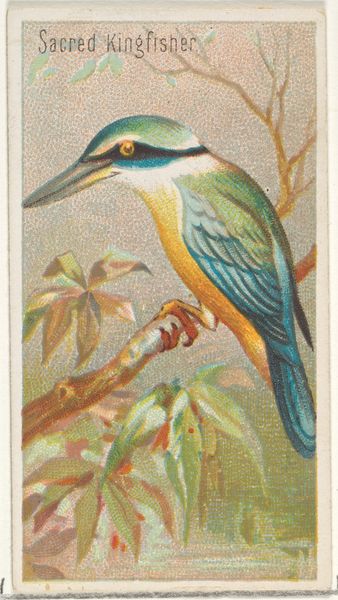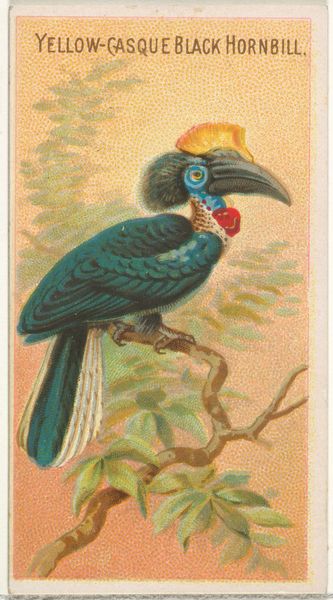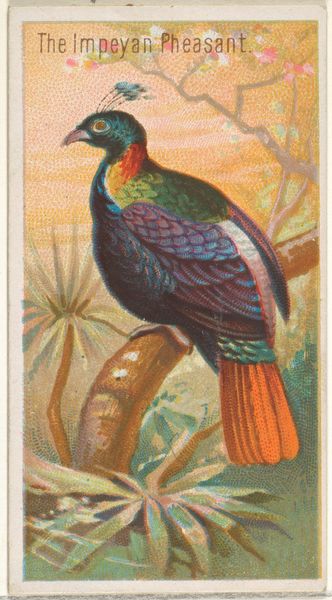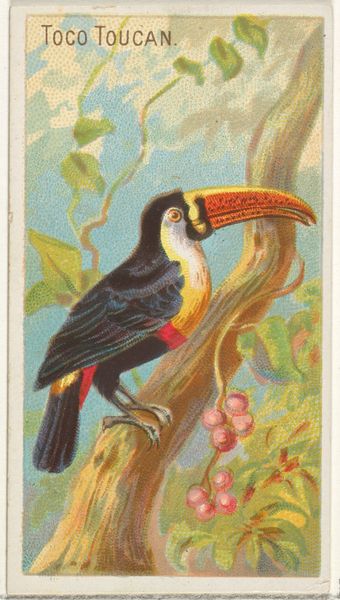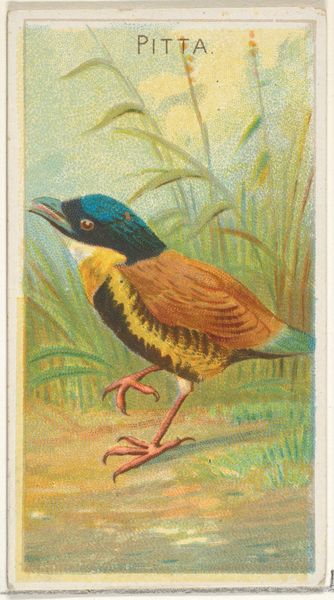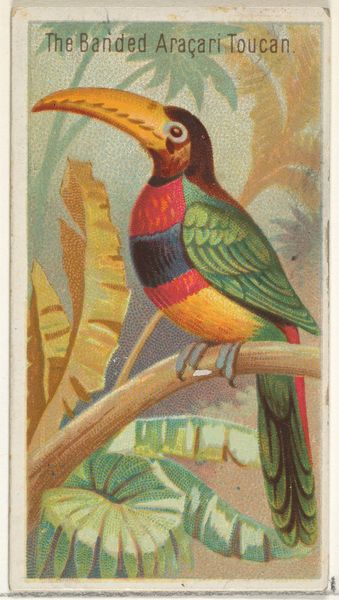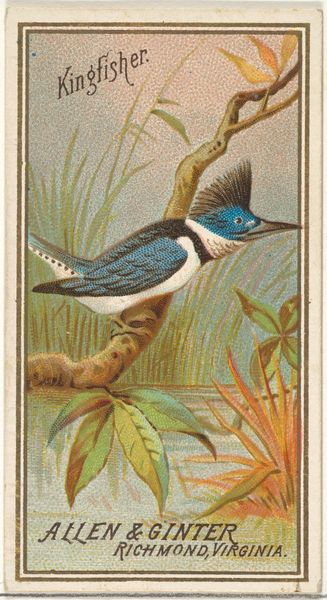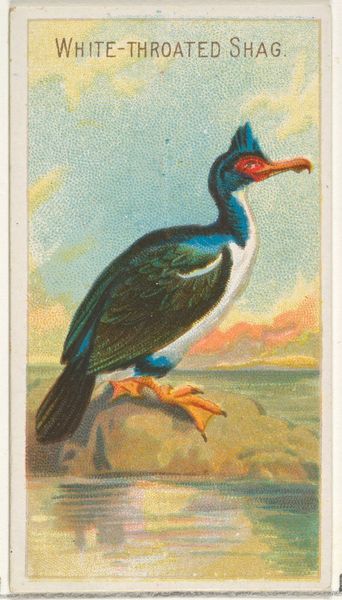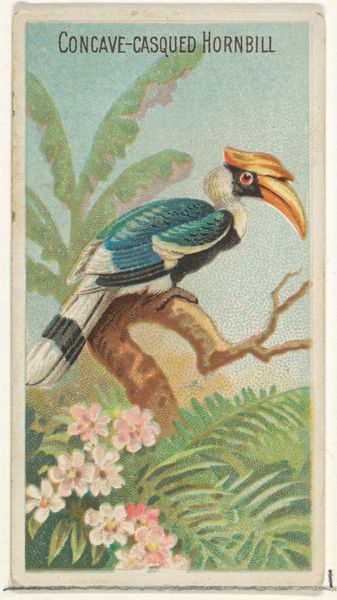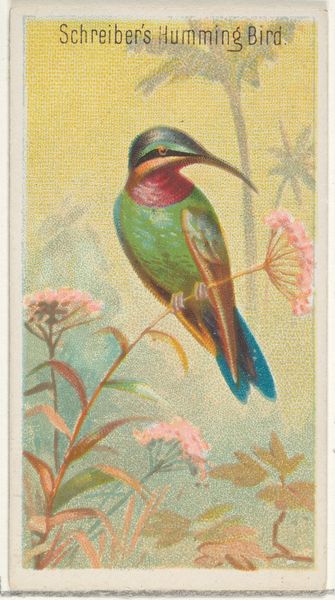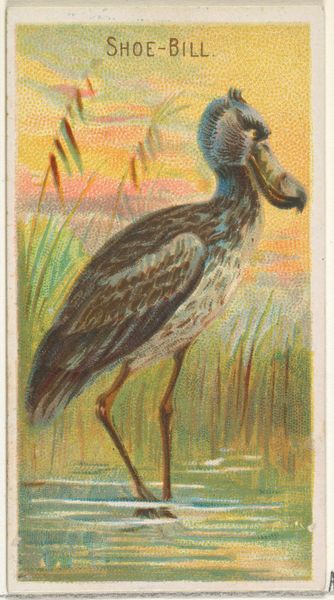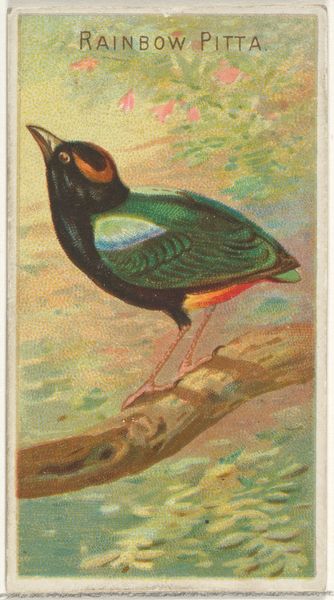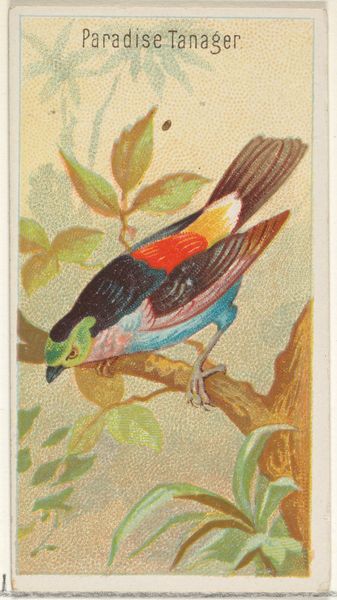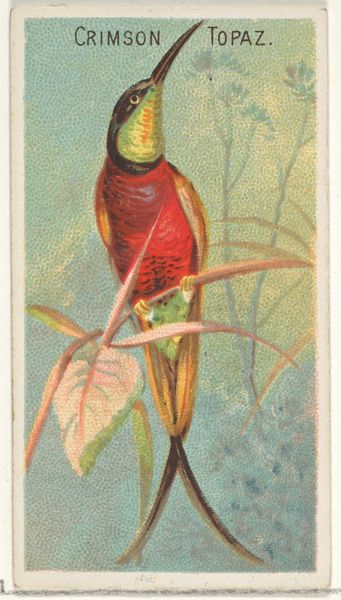
Great Northern Diver (Loon), from the Birds of America series (N4) for Allen & Ginter Cigarettes Brands 1888
0:00
0:00
Dimensions: Sheet: 2 3/4 x 1 1/2 in. (7 x 3.8 cm)
Copyright: Public Domain
Curator: Before us is a small but striking print entitled "Great Northern Diver (Loon)," created around 1888 by Allen & Ginter as part of their Birds of America series. You'll find it currently residing at the Metropolitan Museum of Art. Editor: My initial impression is one of stillness and surprising graphic boldness given the size; the bird practically leaps off its background of muted reeds, don’t you think? The saturated colors are amazing. Curator: They really are, and quite typical of the era when consumer culture was starting to flourish. What’s interesting is that this was one of a series of cards included in cigarette packs. Consider the context: art entering everyday life through tobacco consumption. This challenges the conventional perception of art as separate from commercial ventures and underscores how artworks also functioned as trade cards or promotional material. Editor: From a purely visual perspective, note the dramatic composition - the sinuous curve of the loon’s neck against the straighter lines of the reeds, the intense red of its eye drawing yours in like an anchor. The limited color palette – mostly blues, browns, and muted greens – creates a sense of harmony despite the intensity of each individual hue. Curator: The printing process itself is part of the narrative, wouldn't you say? This was mass-produced, not a unique masterpiece, but each tiny print had to adhere to brand standards using specific colored pencils and production workflows that can illuminate 19th-century modes of manufacture. And look at "Allen & Ginter" imprinted— a powerful statement. Editor: Indeed, yet observe too the careful detail put into rendering the feathers versus the somewhat flattened, simplified reeds. There's a fascinating tension there – a negotiation between realism and stylization—a move toward decorative art traditions. Curator: Yes! The Ukiyo-e influence is palpable in the linear definition and the compositional choices here—elements transported into the commercial world of late 19th-century America. The accessibility and ubiquity of these cards undoubtedly impacted popular taste and artistic awareness, regardless of class. Editor: Agreed. It prompts consideration for the visual vocabulary circulating then. Something seemingly inconsequential such as this offered access to a particular visual aesthetic for many, if only subconsciously. Curator: So, on the surface, just a picture of a bird. However, it provides insight into society. Editor: And its exquisite lines are, quite simply, rather memorable.
Comments
No comments
Be the first to comment and join the conversation on the ultimate creative platform.
